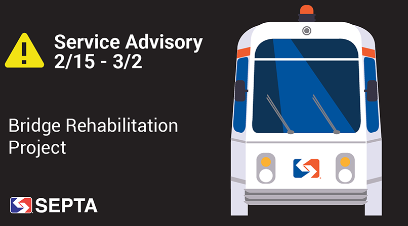The week promotes simple steps to reduce air pollution.
National Air Quality Awareness Week is May 5-9, 2025. It marks the beginning of the ozone season, when the Greater Philadelphia region typically begins to experience poor air quality from high levels of ground-level ozone. This type of ozone forms when summer heat “bakes” exhaust from vehicles, producing an invisible but dangerous chemical in our air. This pollutant damages healthy lungs, makes people more susceptible to lung infections, and makes it even harder for people with lung disease to breathe.
The good news is that everyone can help prevent air pollution and protect their community’s health. National Air Quality Awareness Week kicks off efforts to reduce summertime air pollution by calling attention to important air quality issues and promoting actions individuals can take to make a difference.
Throughout ozone season, DVRPC will share alerts for Air Quality Action Days, which are days when the air quality is predicted to be poor and may require people to take action. In addition to recognizing Air Quality Action Days due to ground-level ozone, DVRPC and the Air Quality Partnership also share alerts due to particle pollution (also known as particulate matter). In June 2023, the Greater Philadelphia region experienced poor air quality issues when smoke from wildfires in eastern Canada flowed south. While ozone pollution is mostly invisible, this episode of high particle pollution could be seen as the minute ashes from the burning material filled the air.
The daily air quality forecast includes alerts for poor air quality as a result of either pollutant and suggests voluntary actions each of us can take to help reduce the pollution and protect each other. To reduce air pollution, we all can:
- Be aware of the air quality. It’s important for everyone, especially those with lung conditions, to know when air quality is poor. Check the daily forecast at airqualitypartnership.org or check your local news station. Many news sites include the air quality forecast with the weather forecast.
- Make small changes. Little things – like combining errands that require driving – can make a big impact. Limit and combine essential car trips to save time, money, and the environment.
- Try other modes of transportation – and maybe save some money, too. Public transit offers a safe and affordable way to get to where you’re going. Additionally, active transportation, like walking or biking, is good for the air and your health. Try to avoid strenuous outdoor activities on days where air quality is poor.
- Consolidate package deliveries. When making purchases online, consolidate your packages into a single delivery and choose “no rush” shipping. This reduces the number of delivery vehicles and the pollution they may cause.
- Don’t top off your gas tank. If you are filling up, don’t top off your tank. Fumes from spillage add two tons of pollution to the air each day. Also, try to re-fuel early in the day or after dusk when the sun is not as strong.
- Maintain your car. A well-maintained vehicle emits less pollution and saves gas. Properly inflated tires improve your gas mileage by 3 percent, while regular oil changes improve your gas mileage by 1 to 2 percent.
The Air Quality Partnership, a program of the Delaware Valley Regional Planning Commission (DVRPC), is a coalition of public and private organizations from New Jersey and Pennsylvania that work collaboratively to educate the public about ways to improve the region’s air quality. On days when air quality is forecast to be unhealthy, the Partnership declares an Air Quality Action Day and asks the public to take voluntary actions to protect their health and reduce pollution levels.
To see the daily air quality forecast and sign up for alerts, visit www.airqualitypartnership.org.
Spanish Resources
The Air Quality Partnership website and educational resources are available in Spanish. Visit www.airqualitypartnership.org and click on “Para Espanol.”
Educational Tools for Teachers
The Air Quality Partnership also offers tools for educators, including an interactive workbook to educate third to fifth grade students about air quality and its impacts on health. The book’s activities include identifying sources of air pollution, solving basic math problems, and using the daily air quality forecast to monitor conditions. The workbook and the teacher’s guide are available at www.airqualitypartnership.org.
About the Delaware Valley Regional Planning Commission
DVRPC is the federally designated Metropolitan Planning Organization for the bi-state, nine county Greater Philadelphia region, which includes Bucks, Chester, Delaware, Montgomery, and Philadelphia in Pennsylvania; and Burlington, Camden, Gloucester, and Mercer in New Jersey.







